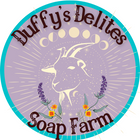If you have any experience in making soap, you knows that lye is essential for making soap. There's no way around it, without the lye, there is no saponification, or the process of the oils bonding to the alkaline in the lye. Have no fear, however, during the process the lye is cooked or "gelled" out of the soap making it safe to use.
Saponification was said to have originally been "discovered" by the ancient women who began notice that at certain points in the river below their sacrificial fires, their wash would be cleaner. They also noticed that when it rained a strange foam would surround their cooking fires. Natural saponification was taking place by the mixing of the fats from the animals and the ashes from the fire.
The first soaps were not the bars or liquids that we're used too. Definitely not the chemically charged substance known as soap today. Originally soap was a gelatinous substance kept in barrels and scooped out when necessary. Often a yearly task early homesteaders would save wood ash and grease all year just to make their soaps, also using discarded fats from slaughtered animals. Later salts were added to this soft soap to make it harder. The amount of soap a customer desired would be cut from the larger soap and it was sold by the pound, Smaller cakes of soap didn't begin to appear until later in the 19th century.
These are just some of the fun things we will explore in this blog. I can't wait to show you soap as its been made thru the years..and take you folks on a soap journey with me. I appreciate your patronage and thank you for visiting my website.

